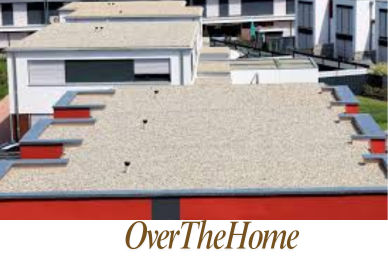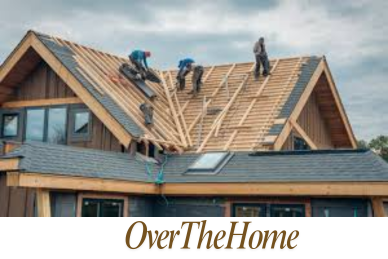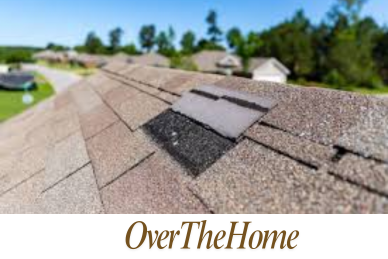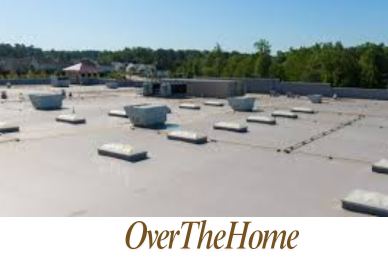2-Ply Modified Bitumen Roofing Systems | A Guide to Modified Bitumen Roofing for Flat Roofs
When it comes to flat or low-slope roofing systems for commercial and industrial buildings, modified bitumen roofing has emerged as a popular and cost-effective choice. These systems have evolved from the traditional built-up roofing (BUR) method, offering improved flexibility, durability, and weathering resistance.
What’s Modified Bitumen Roofing
Modified bitumen roofing systems consist of asphalt bitumen that has been modified with polymers like atactic polypropylene (APP) or styrene-butadiene-styrene (SBS). These modifications enhance the bitumen’s flexibility, making it better equipped to handle building movements and thermal expansion. Additionally, the polymer reinforcement provides superior resistance against UV rays, wind, hail, and moisture.
What’s 2-Ply Modified Bitumen Roofing
At the heart of a 2-ply modified bitumen roofing system lie two key components: the base sheet and the cap sheet. The base sheet, also known as the underlayment, is composed of a reinforcing fabric (such as fiberglass or polyester) that is saturated with a layer of modified bitumen. Its primary function is to adhere to the roof deck, providing a stable foundation for the system.
The cap sheet, on the other hand, serves as the weatherproofing top layer. It consists of a modified bitumen membrane that is surfaced with mineral granules, which protect the roof from UV radiation and physical damage. Together, these two layers create a durable and watertight roofing system that can withstand even the harshest environmental conditions.
Advantages of 2-Ply Bitumen Roofing Systems
One of the most significant advantages of a 2-ply modified bitumen roofing system is its impressive lifespan. With proper installation and regular maintenance, these roofs can last for 25 to 30 years, making them a cost-effective investment in the long run. Their lightweight nature also reduces the structural load on the building, minimizing the need for additional reinforcement.
How 2-Ply Modified Bitumen Roof is Installed
Here is a step-by-step process for installing a 2-ply modified bitumen roofing system:
Step #1 Roof Deck Preparation: Before installation can begin, the existing roof deck must be properly prepared. This involves removing any loose or deteriorated materials, repairing any cracks or damaged areas, and ensuring that the deck is clean, smooth, and free of debris. If necessary, a new deck may need to be installed.
Step # 2 Insulation Installation (Optional): Depending on the project requirements and local building codes, insulation may need to be installed over the roof deck. Common insulation types used with modified bitumen roofs include rigid insulation boards or polyisocyanurate insulation.
Step # 3 Base Sheet Installation: The base sheet, or underlayment, is the first layer of the modified bitumen roofing system. There are two common installation methods for the base sheet:
a. Torch-Down Method: In this method, the back of the base sheet is heated with a propane torch, causing the bitumen to melt and adhere to the roof deck or insulation layer. This process is repeated with overlapping courses until the entire area is covered.
b. Cold Adhesive Method: An alternative to the torch-down method, cold adhesive installation involves applying a specialized adhesive to the roof deck or insulation layer, then rolling out the base sheet and pressing it into the adhesive.
Whichever method is used, it’s crucial to follow proper safety protocols, especially when working with open flames in the case of torch-down installation.
Step #4 Cap Sheet Installation: Once the base sheet is in place, the cap sheet (the final weatherproofing layer) can be installed. This process is similar to the base sheet installation, with the cap sheet being either torch-applied or adhered using a cold adhesive.
During the cap sheet installation, particular attention must be paid to overlapping the seams and ensuring a watertight seal. This may involve using a hot air welder or specialized sealants at the lap joints and terminations.
Step #5 Flashing Installation: Flashings are essential components that provide waterproofing protection at roof edges, penetrations (such as vents or pipes), and other potential leak points. Modified bitumen flashings are typically installed after the cap sheet, with the same torch-down or cold adhesive application methods used for the roofing membranes.
Step #6 Surfacing (Optional): In some cases, an additional surfacing layer may be applied over the cap sheet. This can include flood coats (a protective layer of bitumen and aggregate), reflective coatings (for improved energy efficiency), or other specialized surfacing materials.
Step #7 Final Inspection and Testing: Once the installation is complete, a thorough final inspection should be conducted to ensure that the roofing system has been installed correctly and is watertight. This may involve testing for potential leaks or areas of concern using methods such as flood testing or electronic leak detection.
How Much 2-Ply Roofing Costs
Regarding costs, the exact price of a 2-ply modified bitumen roofing system can vary significantly depending on several factors, including the size and complexity of the roof, the materials used (SBS or APP), and labor costs in your region. However, industry sources suggest that the average cost can range from $4 to $8 per square foot, excluding any additional expenses for roof deck preparation or insulation.
While the initial investment may be higher than some other flat roofing systems, such as EPDM (Ethylene Propylene Diene Monomer) or TPO (Thermoplastic Polyolefin), the long-term cost benefits of a 2-ply modified bitumen roof can make it a worthwhile choice, especially for buildings with a lifespan of 25 years or more.
Alternative Roofing Options
While 2-ply modified bitumen roofing systems offer excellent durability and weather resistance, it is essential to consider alternative options as well.
TPO (Thermoplastic Polyolefin) roofing systems, for instance, are known for their heat-welded seams and environmental friendliness, making them a popular choice for eco-conscious building owners.
EPDM (Ethylene Propylene Diene Monomer) roofing, on the other hand, is an affordable and low-maintenance option with a single-ply membrane design. These systems are relatively easy to install and can provide reliable performance for up to 30 years with proper care.
Final Words
2-ply modified bitumen roofing systems offer a durable, versatile, and cost-effective solution for flat or low-slope roofs on commercial and industrial buildings. With proper installation by experienced professionals and regular maintenance, these roofs can provide decades of reliable protection against the elements.






